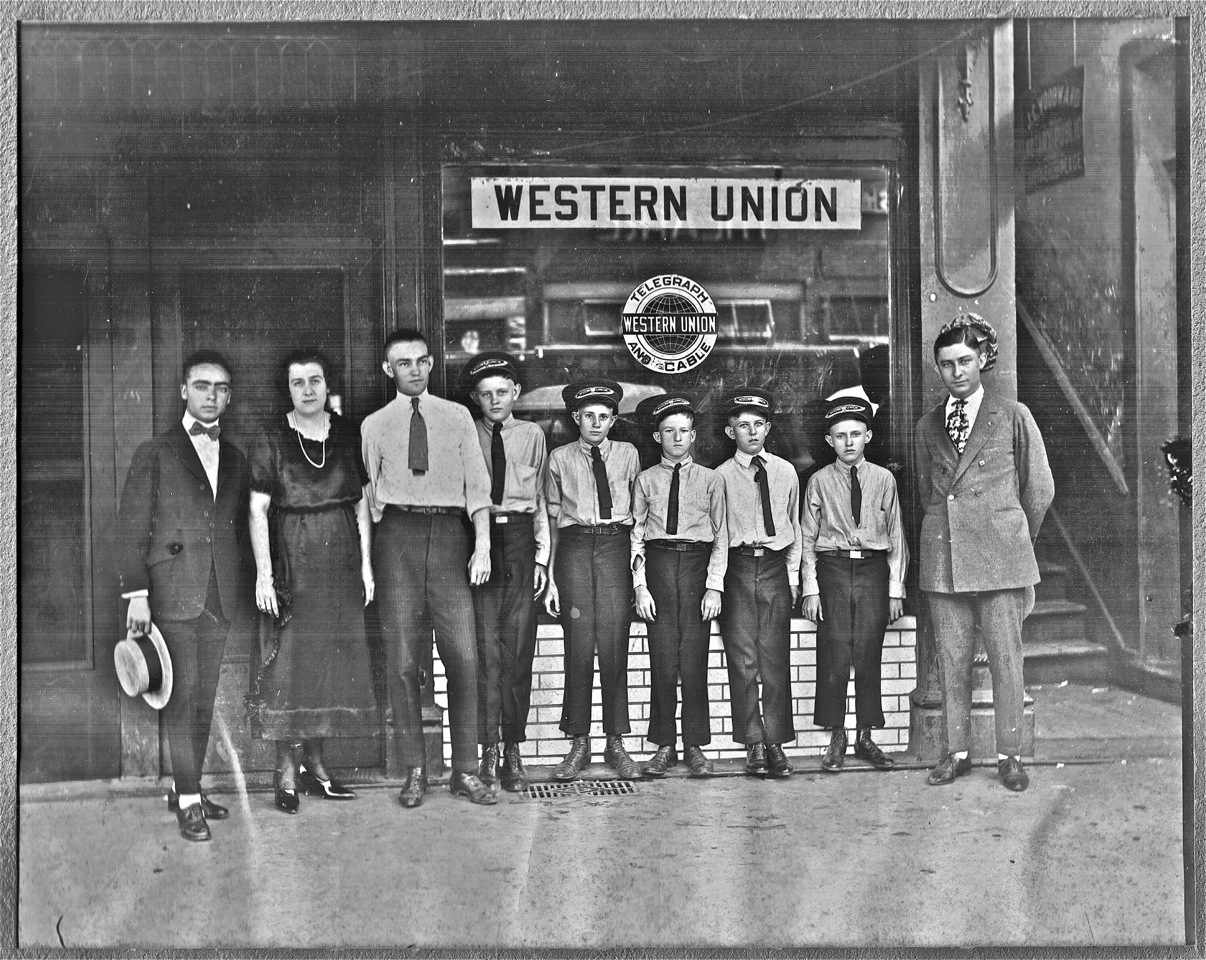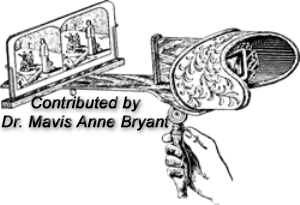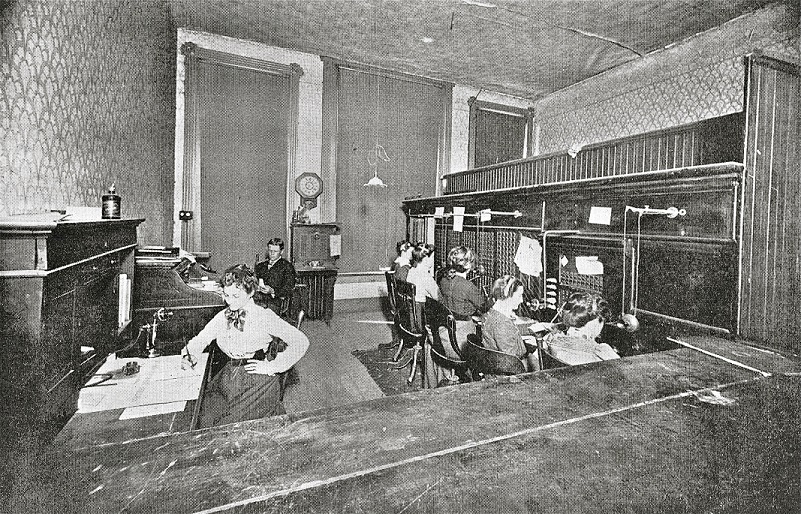|
Early Telegraphs and Telephones in Denison
1876 Before the advent of telephones, Denison communicated with the outside world by telegraph. The 1876 City Directory stated, "The United States Military Telegraph, starting from Denison, extends to all of the military posts in Texas and the Indian Territory, with its other termini at Brownsville and San Antonio. The government maintains at this point an observatory from which weather reports are daily sent to all parts of the country." In 1876, the U.S. Military Telegraph's office (the Texas Division) in Denison was managed by George S. Grimes. The chief clerk there was Herman M. Ludwig. Working as telegraph operators were Eugene Peters and Charles H. Ways. Ignatius V. Wallace was a clerk. A separate telegraph system, Western Union, was managed by Joseph M. Morrison. August Zintgraff worked as a messenger. Both these systems had offices at 227 West Main Street. In addition, the directory listed two other telegraphers working for the Houston & Texas Central Railway: Robert W. Cosnaham and Fred A. O'Maley. In addition, Alfred J. Brewer and George S. Rowley were listed as telegraph operators but gave no specific place of employment. Several of the telegraphers (Morrison, Peters, and Wallace) boarded with Reverend Myron A. Daugherty, pastor of the First Methodist Episcopal Church; he lived on the north side of Woodard Street between Fannin and Mirick avenues. Others (Brewer and Ways) boarded with William J. George, who operated a boarding house at the northeast corner of Gandy Street and Austin Avenue. Denison Daily News
Saturday, December 21, 1878 pg. 4 Joe Koehler has put a weather vane on top of the U.S. Frontier Telegraph building. 
The Sunday Gazetteer Sunday, September 27, 1885 pg. 2 THE WESTERN UNION Telegraph office at Denison, employing three quartette tables and eleven wires is,despite the dull season, doing a good business. Sending out daily (actual figures) an average of 300 messages, outside of specials. The battery in this office consists of 320 cells. The office here works diligently with the following points: North - One line to St. Louis and one to Muskogee, I.T. Southeastern - One circuit to Palestine, and one to Texarkana West- One circuit to Gainesville, and two to Ft. Worth Southern - Two circuits to Dallas, one to Hearne and one (local line) to Sherman. Also one through circuit from Dallas to Kansas City. This office employes none but the latest and most improved instruments, and a large switchboard has been ordered for the accomodation of more wires...The office is now operated by the manager, Mr. O.D. Parker, and three operators, viz: F. McDowel, A. Boatwright, and Henry Bennett. with N. Stone as lineman. One great advantage held and enjoyed by the Western Union is the fact that should all lines below here be cut off by any cause, messages could still be sent south via St. Louis and New Orleans. The Western Union, in addition to the general office at this city, has branch offices at the Union depot and at the H. & T.C. depot, which are kept in operation day and night. TELEPHONE BUSINESS About three months ago there was an indignation meeting held by the citizens of this city with a view of throwing off the yoke of oppression laid on them by the Bell Telephone company. The step never would have been taken by the citizens had their cause not been just. The result of this meeting was an immediate move to secure the Pan-Electric Telephone, and in a few weeks a Pan exchange became a reality in the city. A territorial line from this city to Sherman has been constructed and we will be able to "hello" or "sheolo" to Sherman over the Pan wires in a short while. Superior worth is ascribed to the Pan phone, and Mr. Felts, the clever gentleman in charge of the exchange, informs us that it is not at all uncommon to converse without difficulty while standing twelve of fifteen feet from the phone. This we consider a great improvement over the Bell phones. We presume it would be useless to say anything concerning the validity of the patents of the Pan, as the daily papers have lately recorded all the facts relative to the suit of the United States against the Bell company - the bill setting forth that Bell secured his patents fraudulently and therefore they are invalid. It is a known fact to the scientific world that a "talking telephone" had been produced long prior to the Bell patents; indeed the telephone was named by Philip Reis before Bell ever thought of such a thing. But enough. We can but admire the pluck and energy of our citizens in bravely confronting one of the most gigantic monopolies that ever held sway in the city; and the fact of their success is clearly demonstrated by the falling off of the Bell company's subscribers, which is now not above ten or twelve while the Pan has over one hundred. The manager, Mr. Felts, is an industrious gentleman, while Miss Delia Landreth, the operator, is a universal favorite, and the reporter will go a little further and compliment her pleasing personal appearance. Officer of the "Pan-Electric Telephone Company": Jno. D. Ourand, president; F.M. Robinson, vice-president; Levi Lingo, treasurer; Ed Zintgraff, secretary; Geo. W. Felts, manager. Board of Directors: Sam Waller, C.A. Wilkins; Hiram Brooks; W.B. Boss; B.C. Murray; H. Tone; G.L. Giersa.  1887 The 1887 Denison City Directory listed two telegraph systems. The Western Union office was located at 212-1/2 West Main Street. Orville D. Parker was manager. He lived at 511 West Gandy Street. The other telegraph, the Baltimore and Ohio, had an office at 114 West Main Street and was managed by Miss Edith Menefee. She lived at the home of Mrs. E. Virginia Menefee (widow of H. P. Menefee) at 115 West Gandy. Also living there were Miss May L. Menefee, music teacher; and Oscar S. Menefee, check clerk at Waples, Platter & Company. Edith Menefee was an early leader of Denison's XXI Club, which owned the first women's clubhouse in Texas. Her photo is in Jennie Cunningham Croly, "The History of the Woman's Club Movement in America" (New York: H. G. Allen, 1898), vol. I, p. 1102. See the whole book at http://pds.lib.harvard.edu/pds/view/3031533?n=1121
1891 In 1891, the City Directory continued to list Western Union telegraph. Location of office and manager had not changed. This was the first year when telephones appeared: the Southwestern Telegraph and Telephone Company. The office was upstairs at 220 West Main, and the manager was Fletcher Granger. He boarded at the Thompson House, located near the office at 400 West Main Street (it later was called Central Hotel, Palace Hotel, New Palace Hotel, and Simpson Palace Hotel).  1893
Just
seven years after Alexander Graham Bell uttered these famous words,
another young man names "Mr. Watson" was busy bringing telephone
service to Denison. Dr. Acheson's office increased his total to
two. The one previously installed at his residence was the first
in town.
1896 In the 1896 City Directory, the same two companies were listed, at the same addresses. Southwestern Telephone and Telegraph was managed by Charles C. Davis, who was manager for Denison, Sherman, and Gainesville branches. He lived in Sherman. Western Union's manager was William C. Sheetz. He roomed upstairs at 206 West Main, a few doors west of the office.
1901 A newcomer on the communications scene was Postal Telegraph-Cable Company, with office at 208 West Main. Manager was J. G. Ambrose. Western Union remained at 212-1/2 West Main, but manager was C. W. Gribble. Southwestern Telegraph and Telephone Company had moved upstairs at 211 West Main. The manager now was Fred B. Williford. Tom B. Anderson wrote in his 1975 memoir of life in Denison, Texas: "I remember when a very few phones were in the town and the phone company used a few girls as operators, who were called 'Central.' I can remember an old song, 'Hello, Central, Give Me Heaven.'” In the early years, most operators were women, and they worked together at a "telephone exchange." The operator spoke directly to the person making the call, who gave the number of the telephone being called. Then the operator placed a plug into a specific hole to complete the connection.
 1903 An addition on the scene in 1903 was the Grayson County Telephone Company, headquartered at 111-1/2 South Rusk Avenue. Postal Telegraph-Cable Company had moved to 214 West Main. Southwestern Telephone and Telegraph, as well as Western Union, remained in the same places.  1909 A 1909 publication reported, "Both gas and electric light plants are operated. The telephone exchange has five hundred subscribers." By 1909, the American District Telegraph Company had joined Western Union at the 212 West Main address. Grayson County Telephone Company and Postal Telegraph & Cable Company remained in place. Southwestern Telegraph & Telephone, however, had moved to 422-1/2 West Main; its cashier was Ed Stout.

31 July 1920 line-up at Denison office [1917 City Directory states the office was at 212 W Main & E. S. Anderson is manager] Courtesy of Herald Democrat 
DENISON HISTORY
If you find any of Grayson County TXGenWeb links inoperable,please send me a message. |

